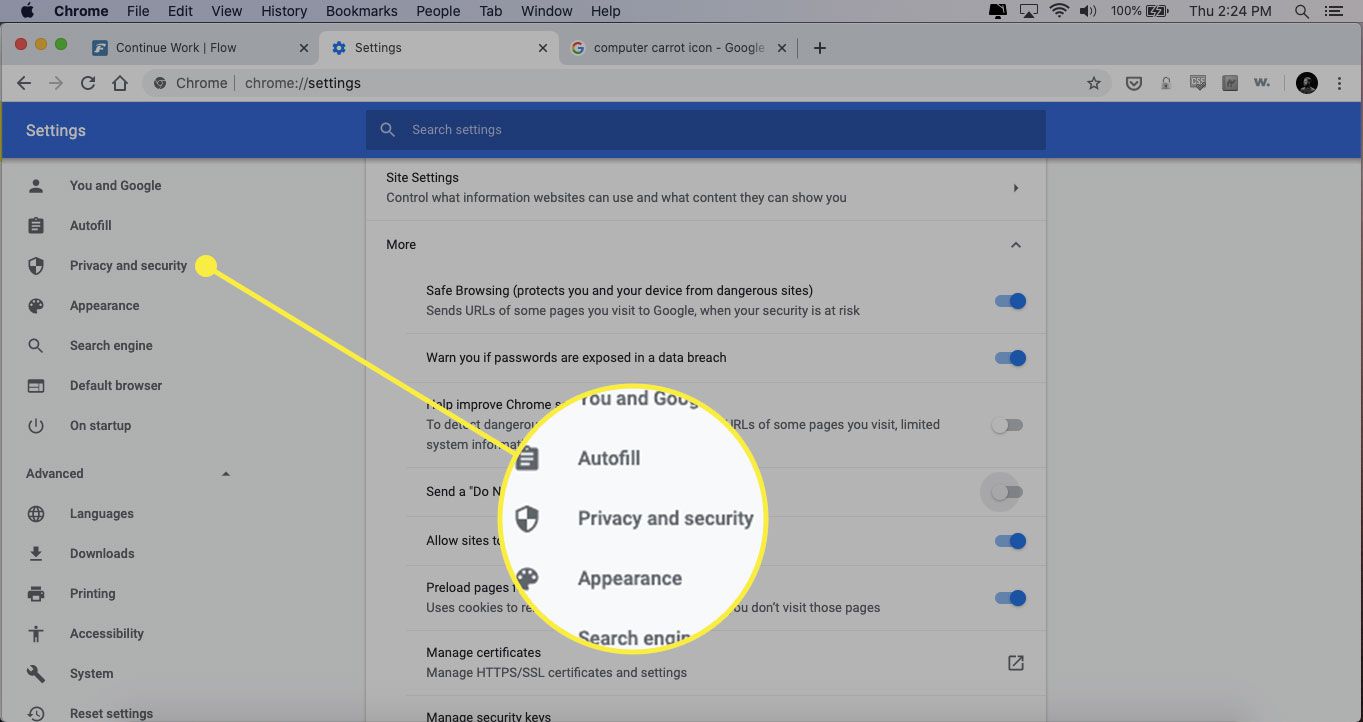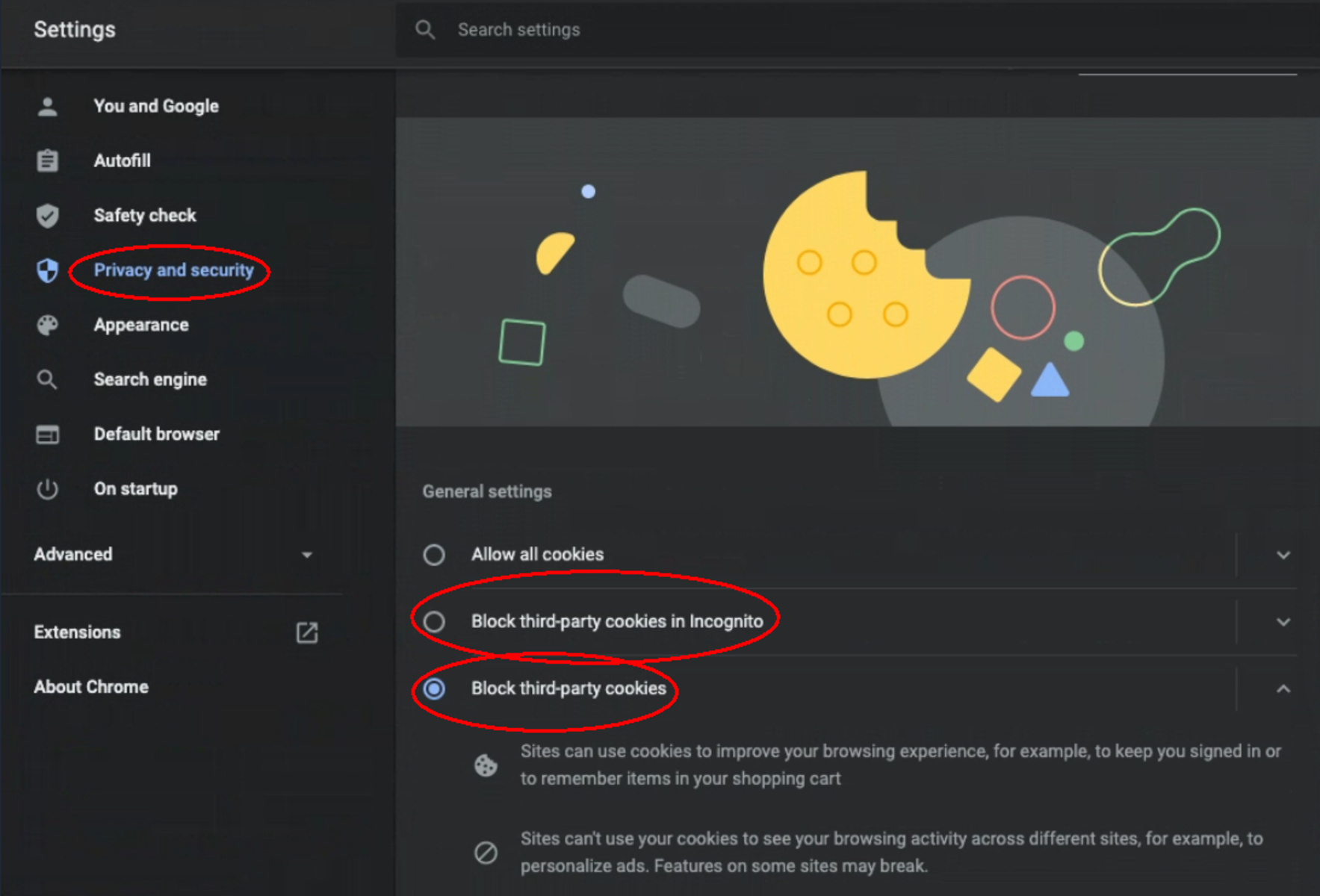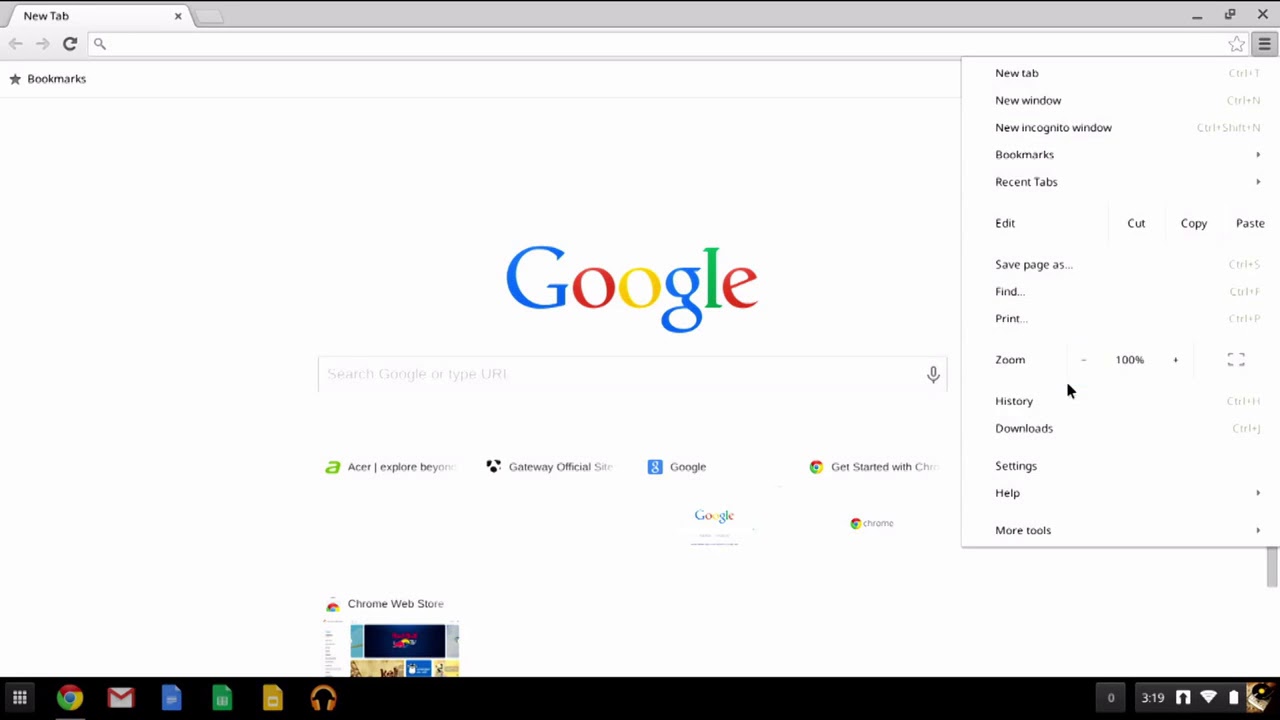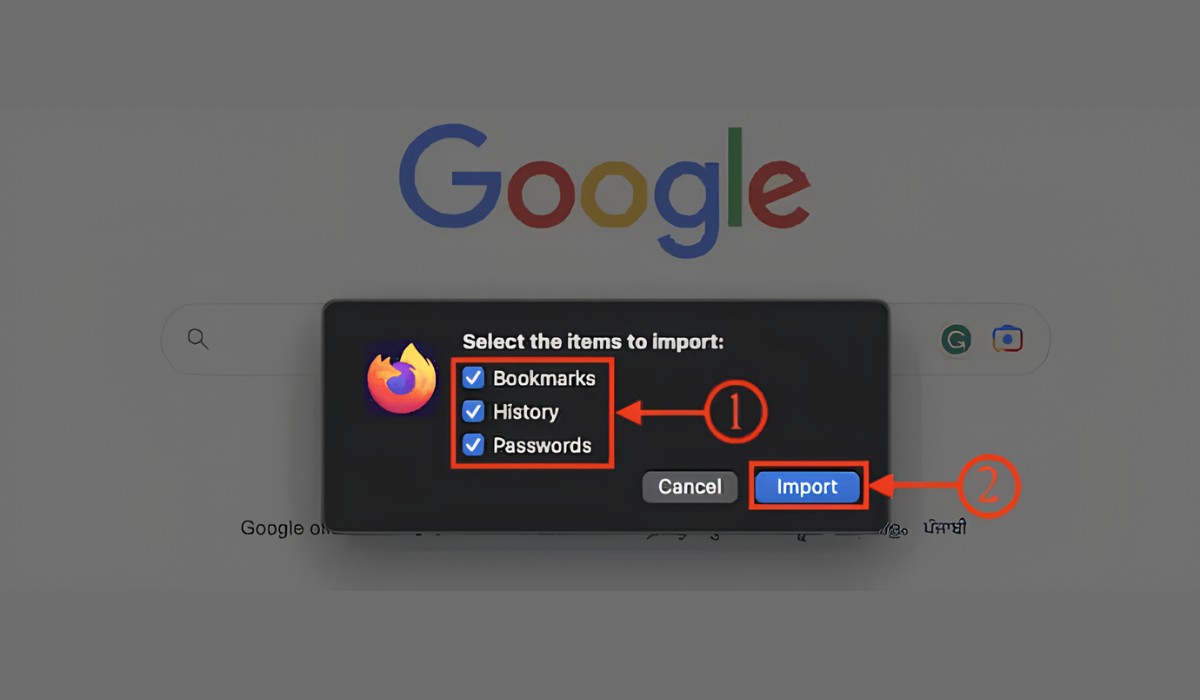Introduction
In today's digital age, online privacy has become a paramount concern for internet users. As we navigate the vast expanse of the internet, our activities are often tracked by websites and online services, leading to targeted advertising and data collection. In response to these privacy concerns, web browsers have introduced various features to empower users with greater control over their online privacy. One such feature is "Do Not Track," which aims to provide users with the ability to communicate their preference for privacy to websites and online services.
The concept of "Do Not Track" is rooted in the idea of giving users the option to opt out of being tracked across websites. This feature is designed to send a signal to websites, indicating the user's preference not to be tracked for purposes such as targeted advertising. While "Do Not Track" does not guarantee complete privacy or anonymity, it serves as a mechanism for users to express their desire for more control over their online activities.
As internet users become more conscious of their digital footprint, the implementation of privacy-focused features like "Do Not Track" has gained significance. It reflects a growing awareness of the need to balance the benefits of personalized online experiences with the protection of individual privacy rights. With the proliferation of online tracking and data collection practices, the introduction of "Do Not Track" in web browsers has emerged as a proactive step towards empowering users to make informed choices about their online privacy.
In the context of Google Chrome, one of the most widely used web browsers, the "Do Not Track" feature plays a crucial role in enhancing user privacy. Understanding how this feature works within the Chrome browser and how users can leverage it to safeguard their online privacy is essential in today's digital landscape. By exploring the intricacies of "Do Not Track" in Chrome, users can gain valuable insights into managing their online privacy preferences effectively.
Understanding Do Not Track
Do Not Track (DNT) is a privacy preference that users can set in their web browsers to signal their preference regarding online tracking and data collection. When enabled, DNT sends a request to websites and online services, indicating the user's desire not to be tracked for purposes such as targeted advertising. It is important to note that DNT is a voluntary signal and does not guarantee complete privacy or block all forms of tracking. Instead, it serves as a communication tool, allowing users to express their preference for more control over their online activities.
The concept of DNT emerged as a response to the increasing concerns about online privacy and data collection practices. As internet users engage with various websites and online services, their activities are often tracked for purposes such as personalized advertising and user behavior analysis. DNT provides a mechanism for users to convey their privacy preferences to website operators and online platforms, fostering transparency and empowering users to make informed choices about their online interactions.
While DNT is designed to convey the user's preference not to be tracked, its effectiveness depends on the response of websites and online services. It is ultimately up to the operators of these platforms to honor the DNT signal and adjust their tracking and data collection practices accordingly. As a result, the impact of DNT can vary across different websites and online ecosystems, highlighting the complexities of online privacy management.
In essence, understanding DNT involves recognizing its role as a user-initiated privacy preference and acknowledging its limitations in the broader context of online tracking and data collection. By grasping the underlying principles of DNT, users can navigate the evolving landscape of online privacy with a clearer understanding of how their preferences are communicated to websites and online services. This knowledge empowers users to engage with the digital world while being mindful of their privacy rights and preferences.
Overall, comprehending the nuances of DNT is essential for users seeking to exercise greater control over their online privacy. By delving into the intricacies of DNT, individuals can make informed decisions about their privacy settings and contribute to the ongoing dialogue surrounding online privacy and data protection.
How Do Not Track Works in Chrome
In Google Chrome, the "Do Not Track" (DNT) feature functions as a mechanism for users to communicate their preference for online privacy to websites and online services. When a user enables DNT in Chrome, the browser sends a signal with each web request, indicating the user's desire not to be tracked for purposes such as targeted advertising. This signal serves as a proactive step towards empowering users to make informed choices about their online privacy.
Upon enabling DNT in Chrome, the browser appends an HTTP header to outgoing web requests, conveying the user's preference not to be tracked. This header, known as the DNT header, contains a value of "1," signifying the user's choice to opt out of online tracking. Websites and online services that receive this signal are expected to acknowledge the user's preference and adjust their tracking and data collection practices accordingly.
It is important to note that the effectiveness of DNT in Chrome depends on the response of websites and online platforms. While Chrome sends the DNT signal on behalf of the user, it is ultimately up to website operators and online services to honor this preference. Some websites may choose to respect the DNT signal by refraining from tracking the user's online activities for targeted advertising or user behavior analysis, while others may continue tracking despite the signal.
Furthermore, the implementation of DNT in Chrome reflects the browser's commitment to empowering users with greater control over their online privacy. By integrating this feature, Chrome acknowledges the evolving landscape of online privacy concerns and seeks to provide users with a tool to express their privacy preferences effectively.
In essence, the functionality of DNT in Chrome revolves around the transmission of a user-initiated signal to websites and online services, indicating the user's preference not to be tracked. While the impact of this signal may vary across different online platforms, the inclusion of DNT in Chrome underscores the browser's dedication to enhancing user privacy and fostering transparency in online interactions.
By understanding how DNT works in Chrome, users can leverage this feature to assert their privacy preferences and contribute to the broader conversation surrounding online privacy and data protection. As users navigate the digital realm, the ability to communicate their privacy preferences through DNT in Chrome empowers them to engage with online content while maintaining a greater degree of control over their personal data.
Enabling Do Not Track in Chrome
Enabling the "Do Not Track" (DNT) feature in Google Chrome is a straightforward process that empowers users to communicate their preference for online privacy to websites and online services. By activating DNT in Chrome, users can proactively signal their desire not to be tracked for purposes such as targeted advertising, contributing to a more privacy-conscious online experience.
To enable DNT in Chrome, users can follow these simple steps:
-
Accessing Chrome Settings: Begin by opening the Chrome browser on your desktop or mobile device. Click on the three-dot menu icon located in the top-right corner of the browser window to access the Chrome menu.
-
Navigating to Privacy and Security Settings: From the Chrome menu, navigate to the "Settings" option and click to open the Settings page. Within the Settings menu, locate and select the "Privacy and security" section.
-
Enabling Do Not Track: Within the "Privacy and security" section, users can find the "Do Not Track" option. By toggling the switch to enable DNT, users activate the feature in Chrome, allowing the browser to send the DNT signal with outgoing web requests.
Once DNT is enabled in Chrome, the browser will append an HTTP header to web requests, indicating the user's preference not to be tracked. This proactive step serves as a means for users to express their privacy preferences to websites and online services, fostering transparency and empowering users to make informed choices about their online interactions.
It is important to note that while enabling DNT in Chrome sends a signal to websites, the effectiveness of this preference ultimately depends on the response of website operators and online platforms. Some websites may choose to respect the DNT signal by adjusting their tracking practices, while others may continue tracking despite the signal.
By enabling DNT in Chrome, users play an active role in asserting their privacy preferences and contributing to the ongoing dialogue surrounding online privacy and data protection. This feature aligns with Chrome's commitment to enhancing user privacy and reflects the browser's dedication to providing users with tools to manage their online privacy effectively.
In essence, enabling DNT in Chrome empowers users to take control of their online privacy preferences, signaling their desire not to be tracked and fostering a more privacy-conscious online ecosystem. As users navigate the digital landscape, the ability to enable DNT in Chrome represents a proactive step towards shaping a more privacy-aware online experience.
Limitations of Do Not Track
While the "Do Not Track" (DNT) feature in web browsers such as Google Chrome serves as a valuable tool for expressing user privacy preferences, it is essential to acknowledge its limitations within the broader context of online tracking and data collection. Understanding these limitations provides users with a realistic perspective on the effectiveness of DNT and its impact on their online privacy.
One of the primary limitations of DNT is its voluntary nature. When a user enables DNT in their browser, it sends a signal to websites and online services indicating the user's preference not to be tracked. However, the decision to honor this preference ultimately rests with the operators of these platforms. While some websites may choose to respect the DNT signal and adjust their tracking practices, others may disregard it entirely, leading to inconsistencies in how user preferences are acknowledged.
Furthermore, the effectiveness of DNT is contingent on the willingness of websites and online platforms to accommodate user privacy preferences. In some cases, websites may continue tracking user activities for purposes such as targeted advertising and user behavior analysis, regardless of the DNT signal. This disparity in response underscores the challenges associated with relying solely on DNT as a comprehensive solution for online privacy management.
Additionally, the evolving landscape of online tracking technologies presents challenges for DNT. As new methods of tracking and data collection emerge, the scope of DNT's influence may become limited in addressing these advanced tracking mechanisms. This dynamic nature of online tracking underscores the need for a multi-faceted approach to online privacy, encompassing complementary tools and strategies to augment the impact of DNT.
Moreover, the absence of a standardized framework for interpreting and enforcing DNT signals contributes to its limitations. While DNT is intended to convey user privacy preferences, the lack of universal guidelines for websites to interpret and respond to these signals introduces ambiguity and variability in how DNT is implemented across different online platforms.
In essence, while DNT represents a step towards empowering users with greater control over their online privacy, its limitations underscore the complexities of managing online tracking and data collection. Recognizing these limitations encourages users to adopt a holistic approach to online privacy, incorporating DNT as one element of a comprehensive privacy strategy that encompasses diverse tools and practices.
By understanding the limitations of DNT, users can navigate the digital landscape with a nuanced perspective, leveraging a combination of privacy-enhancing features and best practices to safeguard their online privacy effectively. This awareness fosters a proactive approach to online privacy management, empowering users to make informed decisions about their digital interactions while acknowledging the multifaceted nature of online privacy challenges.
Conclusion
In conclusion, the "Do Not Track" (DNT) feature in Google Chrome represents a significant step towards empowering users with greater control over their online privacy. By enabling DNT, users can proactively communicate their preference not to be tracked for purposes such as targeted advertising, contributing to a more privacy-conscious online experience. However, it is important to recognize that DNT has inherent limitations within the complex landscape of online tracking and data collection.
While DNT serves as a valuable tool for expressing user privacy preferences, its voluntary nature and the varying responses from websites and online platforms underscore the challenges associated with relying solely on DNT as a comprehensive solution for online privacy management. The evolving nature of online tracking technologies and the absence of a standardized framework for interpreting and enforcing DNT signals further contribute to its limitations.
Despite these challenges, understanding the intricacies of DNT in Chrome empowers users to navigate the digital realm with a nuanced perspective. By leveraging DNT as one element of a comprehensive privacy strategy that encompasses diverse tools and practices, users can proactively shape a more privacy-aware online experience.
As users continue to engage with the digital world, the dialogue surrounding online privacy and data protection remains dynamic. The inclusion of DNT in Chrome reflects the browser's commitment to enhancing user privacy and fostering transparency in online interactions. By acknowledging the limitations of DNT and embracing a multi-faceted approach to online privacy, users can make informed decisions about their digital interactions while advocating for greater privacy rights and protections.
In essence, the journey towards a more privacy-conscious online ecosystem involves a collective effort to balance personalized online experiences with the protection of individual privacy rights. By delving into the complexities of DNT and embracing a holistic approach to online privacy, users can contribute to a digital landscape that respects and prioritizes user privacy preferences, ultimately shaping a more transparent and privacy-aware online environment.

























